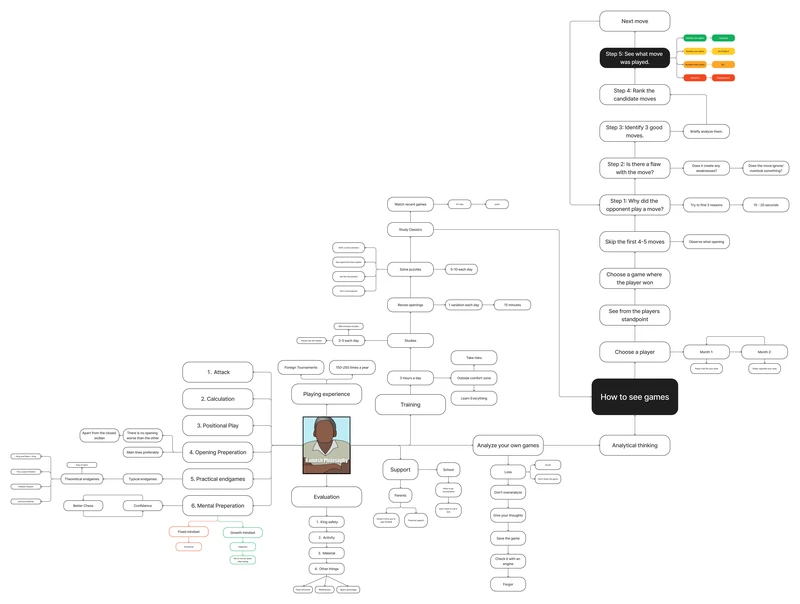In December 2022, I took part in a weekend chess camp in Uppsala. The coach for the camp was the legendary chess author and trainer, Grandmaster Ramesh R.B. He is known for having trained many of India’s chess talents, the most famous being the young super grandmaster Rameshbabu Praggnanandhaa.
He began the camp by getting to know us: our names, our rating strength, and how often we studied chess. At the time, I barely studied at all and was just below 2000 in rating. Then he asked us about our short-term and long-term goals in chess—meaning our goals for 1 year and 5 years ahead.
I went first and said that my short-term goal was to reach 2200, and he looked at me with a disappointed expression. I thought I had been too ambitious and defended myself by saying I had peaked at 2100. Then he leaned back in his chair and said something to the group along the lines of:
“Listen… Gaining 300–400 Elo points in a year isn’t particularly hard.”
I was speechless. I’d been hovering around 2000 for a year, and becoming an FM felt completely out of reach. But spoiler alert: one year and 19 days later, I had reached a provisional rating of exactly 2300, which earned me the FM title. Ramesh was right.
Then he started talking about how we should train and improve at chess. But just a few minutes into his lecture, he suddenly stopped and said:
“I think you should take notes. You’ll remember better that way.”
We obeyed, and since I was such an innovative and sophisticated person, I thought it would be cool to draw a mind map. I’ll show it to you—and don’t worry, I digitized it right after the camp, so you won’t have to struggle with my terrible handwriting.

Part 1: Evaluation
There’s a lot to learn, so I’ll need to divide it into different parts. Let’s start with one of the most important aspects of chess: accurate evaluation of a position, which is essential for both calculation and understanding. Ramesh, along with many other strong players, uses a priority checklist to determine what needs to be analyzed in order to correctly assess a position.

1. King Safety
King safety is the first thing you should look at when evaluating a position. For a king to be safe, it should typically be castled with 2–3 pawns in front of it and ideally protected by a minor piece (like a knight or bishop) for support. Of course, this can vary depending on the position and which phase of the game you’re in, but here’s one example.
2. Piece Activity
Some would argue that material should be the second priority, but Ramesh prefers piece activity. You have good piece activity when all your pieces are placed on useful squares and are actually doing something. An example of activity vs. passivity might be this random blitz game I played.
3. Material
This point is fairly self-explanatory. A player who is up a pawn is almost always better—unless the opponent has a safer king or superior activity. One big advantage of having more material is that you can always give it back to gain activity or to force exchanges of pieces.